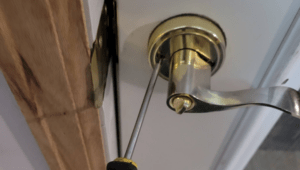8 Money-Saving Tips For Renovating Your Home
Taking on a home renovation project can be both exciting and daunting, particularly when it comes to managing your budget. If you’re wondering how to save money renovating your home, it’s essential to first grasp the basic principles of financial planning and cost-effective decision-making in the realm of home improvement.
Start by setting a clear and realistic budget that includes a contingency fund for unforeseen expenses, which are common in renovation projects. This initial step helps prevent the common pitfall of overspending and ensures that you prioritize essential updates that add the most value to your home.
Setting a Realistic Budget Before You Start Renovations
Setting a realistic budget before you start renovations is crucial to ensure that your project doesn’t end up costing more than you can afford. When considering how to save money renovating your home, it’s important to first evaluate what you can realistically spend without putting undue stress on your finances.
Start by reviewing your savings, then look at potential financing options if necessary, such as a home equity line of credit or a renovation-specific loan. It’s also wise to set aside a contingency fund—typically 10-20% of your total budget—to cover unexpected costs that can arise during renovations.
Break down your total budget into categories such as materials, labor, and permits. Get multiple quotes from contractors to ensure competitive pricing and ask for detailed breakdowns of their estimates.
This will allow you to see where you might be able to cut costs, perhaps by doing some tasks yourself or by choosing more cost-effective materials. Remember, thorough planning and research on renovating your home can prevent costly surprises and help you achieve the results you want within your budget.

Choosing the Right Time of Year to Undertake Home Renovations
When planning how to save money renovating your home, timing can play a crucial role. Choosing the right season for your renovations can not only expedite the process but also reduce costs significantly.
For instance, undertaking renovations during the off-peak season—typically late fall through early spring—can result in lower prices on labor as contractors are often less busy during these times. Also, material costs can dip during the winter months, allowing you to stretch your renovation budget further.
Weather conditions also heavily influence the ideal timing for specific projects. For example, exterior painting and roof work are best done in dry conditions, making late spring through early fall optimal times in many regions. Planning your renovations around these practical considerations ensures that the work progresses smoothly and can help prevent costly weather-related delays or complications.

DIY Projects
When considering how to save money renovating your home, embracing DIY projects can be both rewarding and cost-effective. For instance, simple tasks like painting walls, changing light fixtures, or updating cabinet hardware can transform spaces without breaking the bank.
Many resources are available online, including tutorial videos and step-by-step guides that can empower you to take on these projects confidently. By doing the labor yourself, you save on the cost of hiring professionals, and you gain new skills that can be useful for future maintenance and renovation tasks.
Engaging in DIY activities allows you to control the timeline and prioritize tasks according to your budget constraints. It’s important to start with projects that require less technical expertise, such as landscaping or installing new curtains. As you grow more comfortable with these projects, you might consider taking on more complex tasks, such as tiling or even assembling your own furniture.
Remember, the key to successfully managing home renovation costs is to assess each project’s impact on your home’s value and your personal satisfaction.

Reuse and Repurpose Materials
When tackling home renovations, one effective strategy for saving money is renovating your home by reusing and repurposing existing materials. This approach not only cuts down on costs but also adds a unique character and personal touch to your space.
For example, old wood from cabinets or flooring can be transformed into stunning new shelving units, frames, or even a rustic kitchen island. This method not only preserves a piece of your home’s history but also reduces waste, contributing to a more sustainable renovation project.
Consider repurposing doors and windows. An old door can serve as a new tabletop or a headboard for your bed, adding a vintage flair that is both stylish and functional. Windows can be converted into art frames or greenhouses for small plants.
By thinking creatively about the materials you already have, you can significantly reduce the need for new purchases, keeping your renovation project within budget while still achieving a fresh and updated look for your home. Engaging in such sustainable practices not only saves money but also sets a positive example for eco-friendly living.

Comparing Contractors to Get the Best Deal
When you’re figuring out how to save money renovating your home, finding the right contractor can make all the difference. Start by gathering recommendations from friends, family, or local online forums. Once you have a list of potential contractors, it’s important to get multiple quotes to compare prices and services.
Remember, the cheapest option isn’t always the best; you’re looking for a balance of cost and quality. Check each contractor’s credentials and past work to ensure they have a solid track record.
Engage with each contractor to discuss your project in detail. This is your chance to assess their professionalism and responsiveness. Ask specific questions about their approach to projects like yours and how they handle unexpected challenges.
Make sure to read reviews and possibly reach out to past clients to gauge their satisfaction with the contractor’s work. By taking these steps, you’ll be better positioned to negotiate the best deal while ensuring quality workmanship for your home renovation.

Shopping Smart for Materials
A smart and effective strategy is to shop smart for materials. Instead of heading straight to the nearest retail store, take some time to explore local auctions, online marketplaces, or even salvage yards.
Often, you can find high-quality materials left over from other projects at a fraction of the cost. Additionally, consider the timing of your purchases. Many hardware stores offer significant discounts during certain seasons or on major holidays, which can lead to substantial savings on your renovation expenses.
Another savvy approach is to compare prices between different suppliers. Sometimes, local suppliers may offer competitive pricing that can undercut the big chain stores, especially if you establish a good relationship with them. Don’t hesitate to negotiate prices or ask for discounts on bulk purchases—many businesses are willing to offer a better deal to secure a large sale.

Prioritizing Projects When Renovating Your Home
It’s essential to prioritize your projects when considering how to save money renovating your home. By focusing on what needs immediate attention, you can avoid the costs associated with worsening issues that could become more expensive over time.
Addressing a leaky roof or faulty wiring before updating cosmetic features like paint or flooring can save money in the long run. This strategy not only helps manage your budget more effectively but also ensures that your renovations enhance your home’s safety and functionality first.

How to Avoid Common Pitfalls that Increase Renovation Costs
You will want to keep a close eye on budget creep. This common pitfall occurs when small changes and upgrades start to accumulate, pushing the overall cost higher than originally planned.
To combat this, it’s essential to have a detailed plan and budget before you begin and stick to it as closely as possible. Prioritize your renovations based on what will add the most value to your home, and be realistic about what you can afford. Avoid the temptation to add on additional projects mid-renovation, as these can quickly derail your financial plan.
The journey of remodeling your home while keeping costs down is both rewarding and challenging. It demands creativity, diligence, and a proactive attitude towards spending and saving. The goal during renovations isn’t just to cut costs but to make smart choices that enhance the value and aesthetics of your home without breaking the bank.
Ready to start your next project? Join our DIY community to receive tool tips, how-to guides, and exclusive creative insights. Subscribe to the ManMadeDIY newsletter now!









